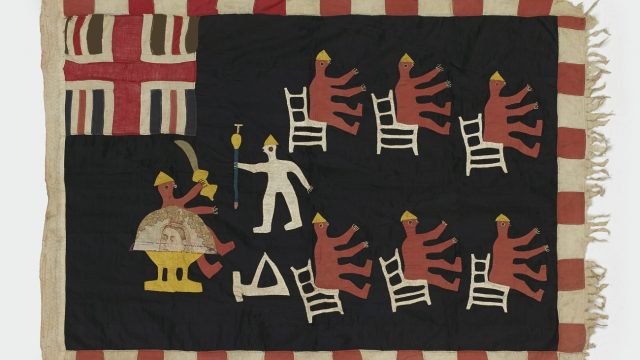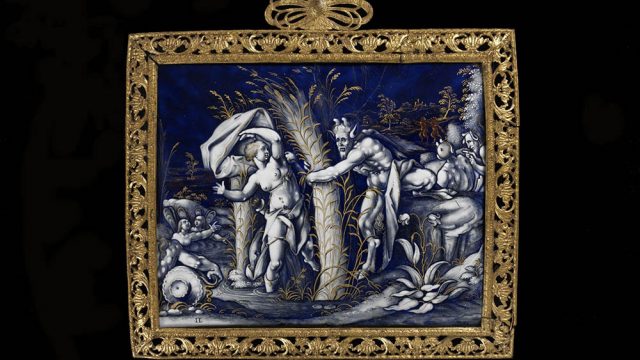The V&A textile collection is one of the most important in the world because of the wide range of raw materials, techniques, places of production and time periods it covers. The Interwoven project focuses on textiles and ecclesiastical vestments related to Spain, especially those from the Middle Ages and Early Modern period, velvets and embroideries (for more information see the project web page).
The South Kensington Museum (renamed the Victoria and Albert Museum in 1899) collected both historical and contemporary textiles from when it opened in 1857. They were acquired for their materials, techniques and patterns or designs, to provide students, artists and designers with models that would improve British textile production.
The process of acquisition at the South Kensington Museum followed different steps, and the Museum Archive keeps the records of those processes. There you can find the letters of collectors or private individuals offering work to the Museum’s director, Henry Cole. There are also letters from the Museum’s curators, requesting permission to purchase artworks that they considered of interest to the Museum.
The art referees (for a full explanation see here) recommended acquisitions or loans; reported on sales and auctions containing attractive objects for sale; wrote reports, evaluated and valued potential acquisitions and wrote descriptions of the objects acquired. Some of these reports are illustrated with sketches and drawings that explain in detail the textile, and highlight its importance (fig. 1).
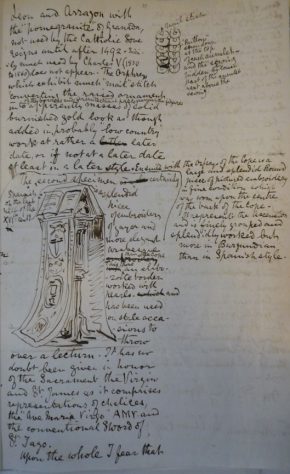
The people nominated by the Museum included museum curators, such as R. Redgrave and J.C. Robinson, or experts in different fields. Some of them were very well known artists, including William Morris (who wrote reports on embroideries, tapestries and carpets, for example) or architects such as Matthew Digby Wyatt, or experts in different cultures, such as Juan Facundo Riaño for Spanish artworks. For a full list see here.
It is important to note that the Museum shared pieces of the same textile with other museums, such as the MAK or Österreichisches Museum für Angewandte Kunst of Vienna, the Musées Royaux d’Art et d’Histoire of Brussels or the Cooper-Hewitt of New York, among others. All of them were in contact with the same collectors (for example, Franz Bock, Robert Forrer, Paul Schultze, etc.) or art dealers (for example, S. Baron in Paris). These museums were very keen to acquire historical textiles, and collectors and art dealers cut the textiles into sections to share them out and, in some cases, made a good profit by doing so. This practice was widespread in the 19th century.
The first textiles to become part of the Museum collection was a group of lace purchased in 1854 (fig. 2); it is interesting to note the importance of the V&A lace collection, which comprises both historical and contemporary production. In general, textiles were one of most numerous and diverse of the Museum’s early collections. No doubt, one reason for such interest was the economic importance of British textile production in the 19th century.
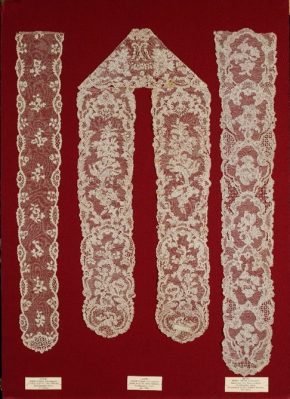
I have worked with a selection of textiles acquired from 1852 to 1948 and today’s entry is focused on acquisitions made between 1852 and 1880, including those from Canon Bock, Herr Krauth and Herr Schultze. Future blogs will focus on particular acquisitions or groups of acquisitions and the development of the Interwoven project. In each entry, many names will turn up repeatedly, because the same art dealers, collectors and sellers remained in contact with the Museum over long periods of time.
Franz Joseph Bock was one such man. He was canon of Aachen Cathedral, a textile connoisseur (a non-professional specialist) and collector, textiles forming the core of his collection. He travelled to study many of the textiles preserved in churches and cathedrals across Europe, Turkey and the Near East. Sometimes, he cut fragments from the textiles and kept them in his collection; at other times he bought the textiles. Later, he used to sell fragments from his collection as a way to fund purchases of new items.
The Museum bought from Bock a substantial number of textiles between 1860 and 1883 (fig. 2). These textiles are at the heart of the V&A’s early textile collection, which dates from Late Antiquity, from the 4th century AD to the 18th century, from the Middle East to Iberia from North Europe to North Africa. He organised the collection in wooden showcases, in which the textiles were displayed and grouped by techniques and forms of decoration. He had a very close relation with the Museum, as you can see through his correspondence with the Museum’s first director, Henry Cole. In 1863 he was in London, paid by the Museum, to describe and classify the textiles already acquired from him. His descriptions in German give an idea of his knowledge about textiles and in general about the ‘state of the art’ in the subject in the late 19th century (fig. 3).
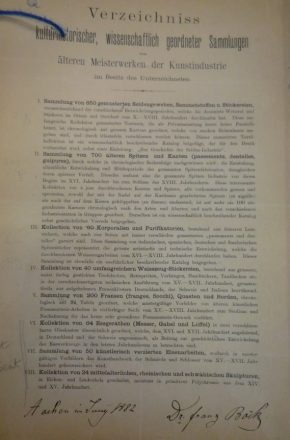
The Museum also acquired textiles from Jacob Krauth (1803 – 1883) and Paul Schulze (1854 – 1928), who were both from Germany. Krauth was a prominent collector, and the first director of the Krefeld Textile Museum and Schulze was his successor at Krefeld. Both offered to the Museum, from 1875 – 96, not only historical textiles (fig. 4) from places such as St. Mary’s Church at Gdańsk (Poland) but also printed textiles that copied the historical ones. These printed textiles were acquired as examples of particular design motifs (fig. 5 ). The Museum interest in collecting a rich assortment of designs as models for future artists and craftsmen and women was the reason for these purchases.
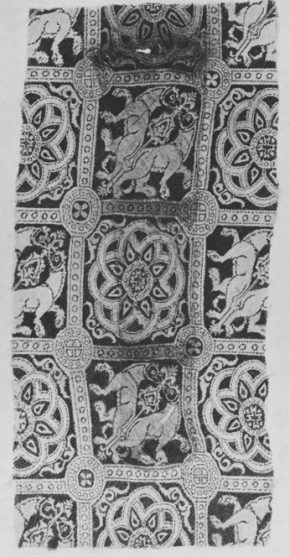
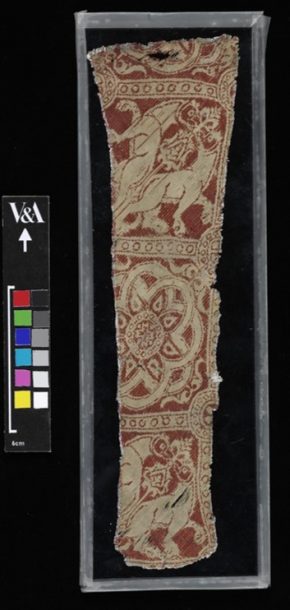
The German Textile Museum was founded alongside the City Art School to support Krefeld’s important textile industry, established in the 18th century and active until the Second World War. The Krefeld Textile Museum lost its museum archive when it was bombed during the World War II, but now documentation of the textiles purchased by the V&A could help to rebuild its history.
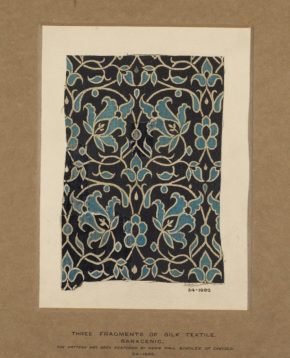
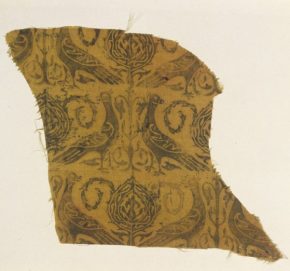
Bibliography:
F. Bock, 1859: Die Musterzeichner des Mittelalters. Anleitende Studienblätter für Gewerbe- und Webeschulen, für Ornamentzeichner, Paramenten-, Teppich- und Tapetenfabrikanten nach alten Originalstoffen eigener Sammlung, Leipzig
B. Borkopp-Restle, 2008: Der Aachener Kanonikus Franz Bock und Seine Textilsammlungen ein Beitrag zur Geschichte der Kunstgewerbe im 19. Jahrhundert, Abegg-Stiftung, 2008.
J. Bryant (ed.), 2011: Art and design for all. The Victoria and Albert Museum, exhibition catalogue, London.
A. Paetz Gen. Schieck: “Transformations process of the Jacob Krauth Textiles collection into a Study collection and emergence of the Deutches Textilmuseum Krefeld, Germany” in M. Rosina (ed.) Collecting Textiles. Patrons collections museums, pp. 47-62.
Gere, Charlotte, and Carolyn Sargentson, eds. ‘The Making of the South Kensington Museum: Curators, dealers and collectors at home and abroad’, in Journal of the History of Collections 14, no.1 (2002)
This research has been possible thanks to Interwoven project. Ana Cabrera has received funding from the European Union’s Horizon 2020 Research and Innovation Programme under the Marie Sklodowska-Curie grant agreement No. 703711.

